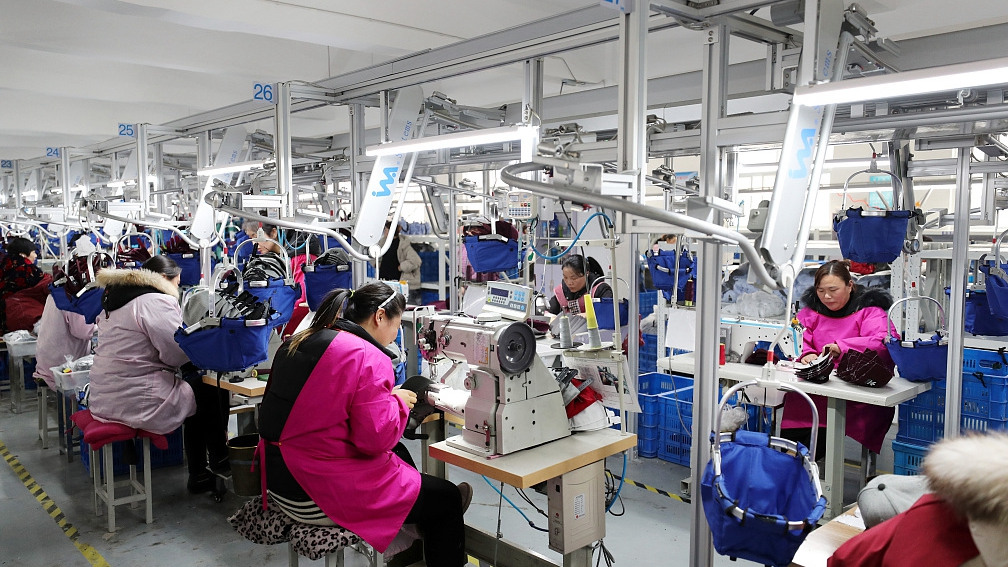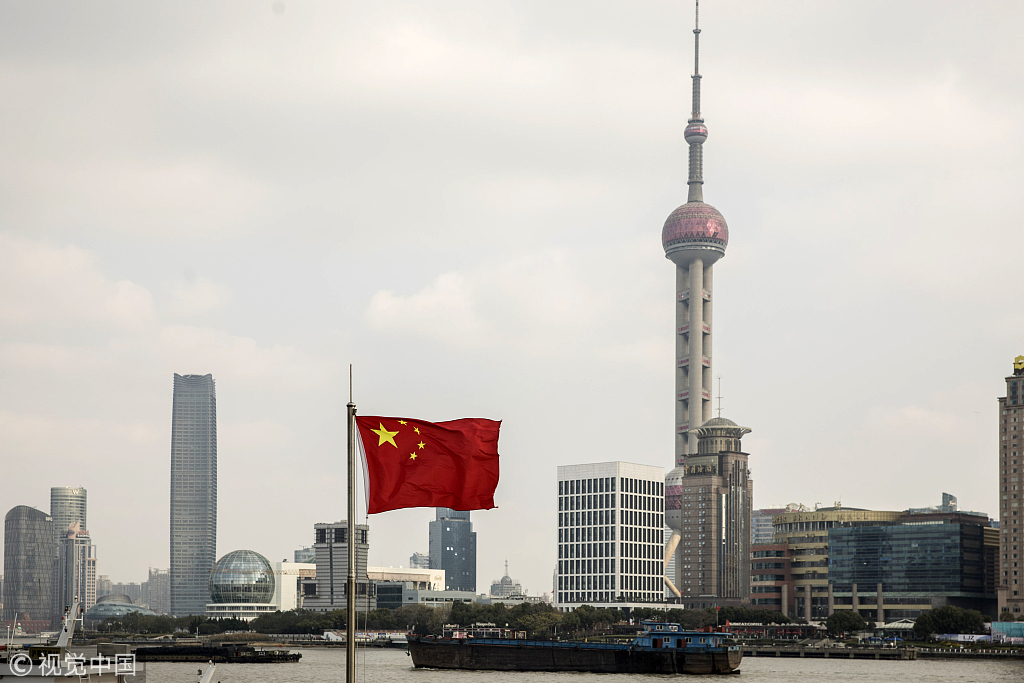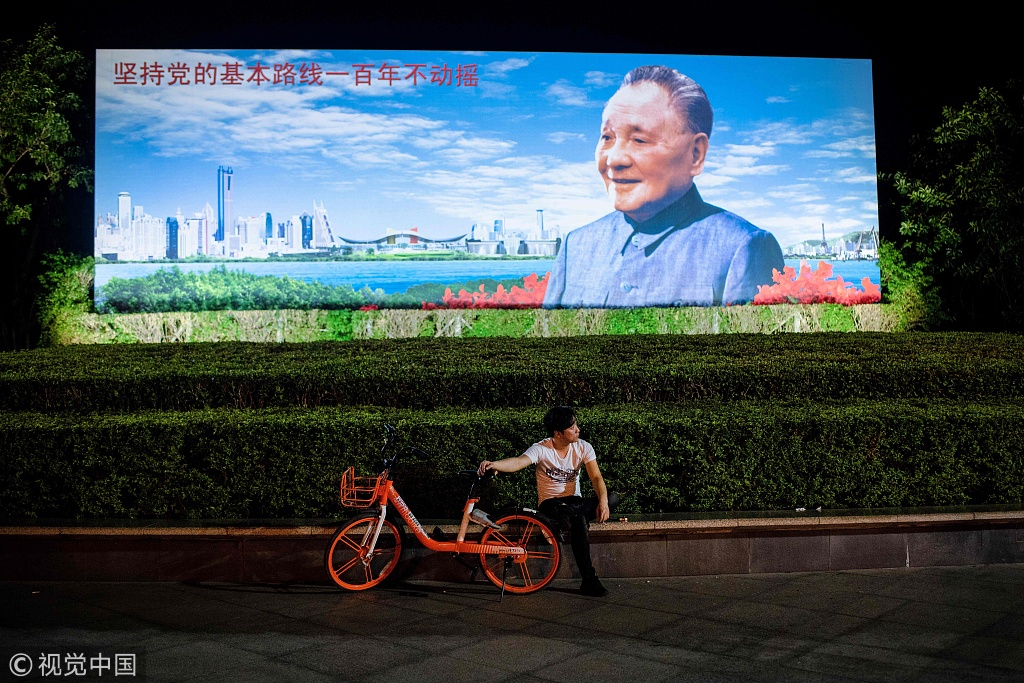
Opinion
22:37, 26-Jan-2019
Opinion: Where is China's economy heading?
Updated
13:06, 27-Jan-2019
Zhang Jianping & Du Jingjing

Editor's note: Zhang Jianping is the director of the Chinese Academy of International Trade and Economic Cooperation under China's Ministry of Commerce (CAITEC of MOFCOM). Du Jingjing is a research assistant CAITEC and MOFCOM. The article reflects the authors' opinions, and not necessarily views of CGTN.
There are multiple factors affecting China's economic development. The weakening demand of developed countries, including that of Japan and the U.S., partly caused by their slowing economic growth, has hampered China's growth in investment, production and export.
China, along with other developing countries, has yet to develop a mechanism that could generate an endogenous economic growth. And the contribution of China's domestic consumption is insufficient, which also affects the momentum of its economic growth.

A Chinese national flag flies as skyscrapers of the Pudong Lujiazui Financial District stand across the Huangpu River in Shanghai, China, Dec. 28, 2018. /VCG Photo
A Chinese national flag flies as skyscrapers of the Pudong Lujiazui Financial District stand across the Huangpu River in Shanghai, China, Dec. 28, 2018. /VCG Photo
Moreover, the trend of anti-globalization, as can be seen in the U.S. measures to slap tariff sanctions on China and some other countries, has been causing uncertainty in China's economic development and disruptions to the global value chain.
In the future, global economic growth will require developed countries to take effective measures to solve problems facing global economic growth. China and other developing countries need to adopt social reforms, improve their income distribution system and enhance domestic demand to promote global economic growth.
Nevertheless, there are also factors that could generate more growth in China. First, the Belt and Road Initiative would be a great driver of growth. In 2018, the total import and export volume of China's goods trade with Belt and Road countries reached 1.3 trillion U.S. dollars, a year-on-year increase of 16.3 percent. The rate is 3.7 percentage points higher than the growth rate for China's overall foreign trade over the same period, accounting for 27.4 percent of the total foreign trade.
Second, China's economy is in the process of transforming and adapting to a new model. During the process, its economic structure needs to be optimized and supply-side innovation strengthened, which will lend more momentum for the country's growth.
Moreover, a new round of global industrial technology reform has started. The global economic competitiveness is being redefined. The international and domestic environmental changes are intertwined, and there is a higher expectation for nurturing and stimulating new kinetic energy.
Furthermore, reform and opening-up is the most distinctive feature of contemporary China. The establishment of a free trade pilot zone is a strategic move for China to comprehensively deepen reforms and promote a new round of opening up.

A man with a shared bicycle rests in front of a poster of former Chinese leader Deng Xiaoping in Shenzhen, southern China's Guangdong Province, November 8, 2018. /VCG Photo
A man with a shared bicycle rests in front of a poster of former Chinese leader Deng Xiaoping in Shenzhen, southern China's Guangdong Province, November 8, 2018. /VCG Photo
Last year marked the 40th anniversary of reform and opening-up. The best way to commemorate the reform is to continuously deepen reform and opening-up and continue to make breakthrough achievements.
China will continue to see institutional innovation as the core task and strive to make further breakthroughs in realizing the national strategy of China's revitalization and building a new comprehensive pattern for opening up. If the free trade zone model can be copied and scaled up, it will continue to release the systematic innovation bonus of the pilot free trade zone, bringing a new round of reform and opening up and leading economic revitalization.
China is expected to surpass the U.S. to become the largest consumer market this year. It should take further action to promote its economic development.
Among the three carriages of economic growth, domestic consumption will be the most powerful driver. Investment on infrastructure and private enterprises still has potential for development and profit, but whether it can really thrive relies on further reduction of tax and administrative fees. And from the international trade perspective, we can expect an increase in exports, a significant contributor to China's economy. There is still room for China to increase its share in the international market.
(If you want to contribute and have specific expertise, please contact us at opinions@cgtn.com)

SITEMAP
Copyright © 2018 CGTN. Beijing ICP prepared NO.16065310-3
Copyright © 2018 CGTN. Beijing ICP prepared NO.16065310-3